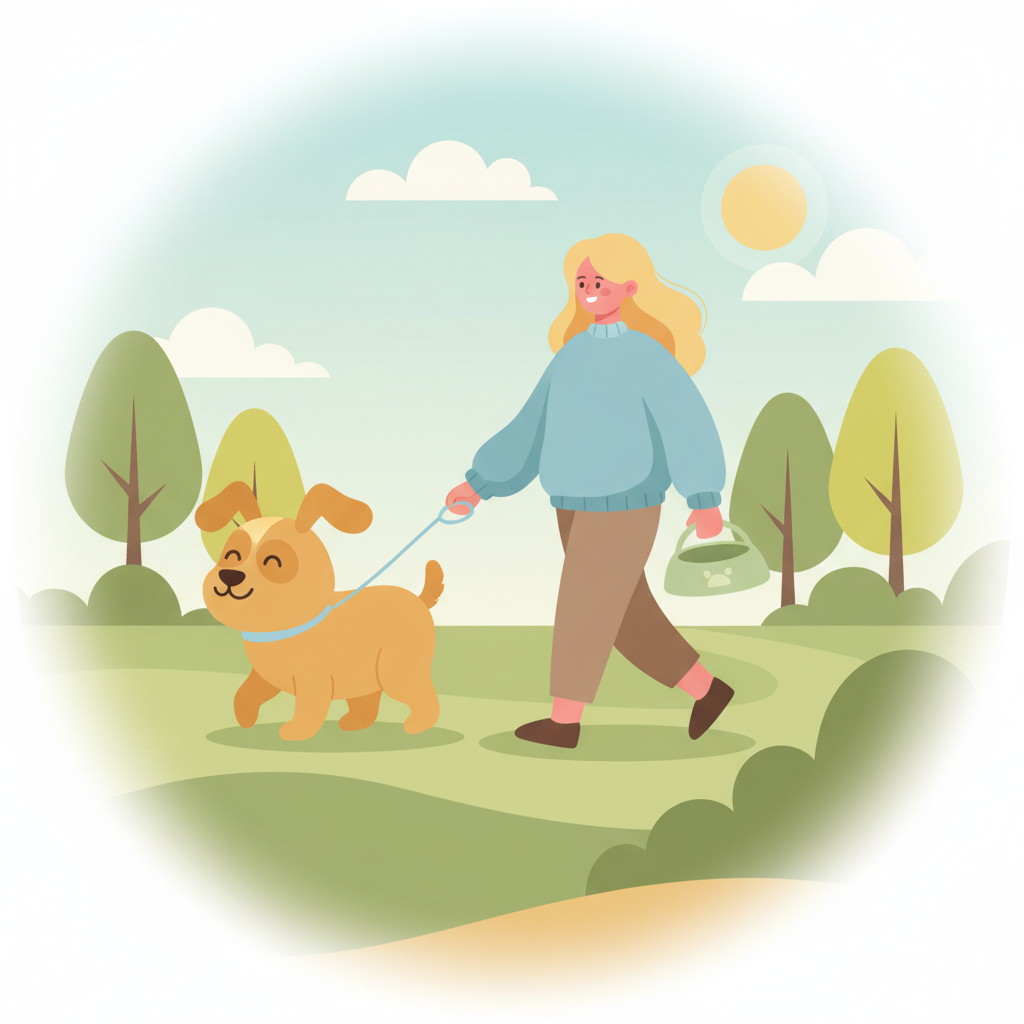Managing your dog’s weight can feel overwhelming, especially when you want nothing more than to see your furry friend happy and healthy. Extra weight isn’t just cosmetic—it can lead to serious health problems for your dog over time, including arthritis, diabetes, and heart disease.
The good news is that by adopting manageable, simple daily habits, you as a dog lover can help your dog shed pounds safely and improve their quality of life. These habits focus on portion control, consistent exercise, and thoughtful treat management, all tailored to your dog’s individual needs.
In this article, you’ll discover easy-to-follow daily habits that boost your confidence in how to manage dog weight and support your dog’s journey to a healthier body condition.
Your 3 Daily Habits To Manage Dog Weight
Habit 1 — Accurate Portion Control
Why: Managing your dog’s calorie intake is essential to manage dog weight because overfeeding is a common cause of weight gain.
How: Use a digital kitchen scale or measuring cup to weigh your dog’s food every meal based on veterinarian guidance. Avoid guessing portions.
Cue: Before each meal, set out your dog’s food bowl and measuring tools to prepare the right amount.
Habit 2 — 30 Minutes of Daily Exercise
Why: Consistent physical activity helps burn calories and maintains muscle while reducing fat, crucial to manage dog weight.
How: Walk briskly with your dog at least 30 minutes per day, or split into two sessions. Mix in play with balls or safe toys to keep your dog engaged.
Cue: Use your dog’s leash and harness as a signal to start the walking routine every day around the same time.
Habit 3 — Healthy Treat Choices and Limits
Why: Treats can add extra calories that undermine manage dog weight efforts if not controlled.
How: Limit treats to no more than 10% of daily calories. Choose low-calorie snacks like baby carrots, green beans, or apple slices.
Cue: Only offer treats during training sessions or special occasions, keeping treats in a designated container separate from regular food.
Week 1 Schedule
| Day | Portion Control | Exercise | Treats |
|---|---|---|---|
| Monday | Measure food precisely for all meals | 30-min brisk walk in evening | Limit to 2 baby carrots |
| Tuesday | Maintain exact portion sizes | 15-min morning walk, 15-min fetch | No treats except during training |
| Wednesday | Consistent feeding schedule and portions | 30-min walk after work | 1 slice apple during play |
| Thursday | Track food amount meticulously | 20-min walk, 10-min interactive play | Limit treats; avoid leftovers |
| Friday | Weigh food portions for all meals | 30-minute brisk walk | 2 green beans as reward |
| Saturday | Feed same portions, adjust if needed | Extended 45-min walk or hike | Only low-calorie treats |
| Sunday | Review feeding plan with notes | Rest or light play day | Minimal treats |
Troubleshooting
Barrier: Difficulty measuring precise portions due to busy schedule.
Fix: Prepare and pre-measure your dog’s meals in advance using containers or baggies daily to keep consistency when managing dog weight.
Barrier: Dog begging excessively for food and treats.
Fix: Replace treats with attention, play, or short walks to satisfy your dog’s need for interaction rather than food.
Barrier: Dog reluctant to exercise due to age or health.
Fix: Consult your vet for low-impact activities like swimming or gentle walks customized for your dog’s condition.
FAQs
Q: How can I tell if my dog is overweight?
A: Check your dog’s waistline and ribs. You should see a noticeable waist from above and feel ribs easily under a thin fat layer. This is key to managing dog weight.
Q: How often should I weigh my dog?
A: Weigh your dog every 1 to 3 months to track progress. Adjust feeding and exercise based on results and veterinary advice for optimal manage dog weight success.
Q: Can I feed my dog less of the regular food to help with weight loss?
A: It is better to use a therapeutic or weight-control diet recommended by your vet, as simply feeding less may cause nutritional deficiencies.
Tracking & Motivation Tips
Keep a simple journal or app log to track your dog’s daily food portions, exercise minutes, and treats given. This helps you stay aware and motivated to manage dog weight effectively. Celebrate small wins like improved stamina or a healthier body condition.
Key Takeaways For Managing Dog Weight
Manage dog weight successfully by combining accurate portion control, regular daily exercise, and thoughtful treat management. These simple daily habits build consistency and help improve your dog’s health and happiness over time. Remember, gradual progress and patience are your allies on this journey.
Join the Waitlist
Ready to put these habits into action? Dayspire helps you reach any goal with simple daily habits. Join the waitlist now to be the first to get invited to Dayspire!




